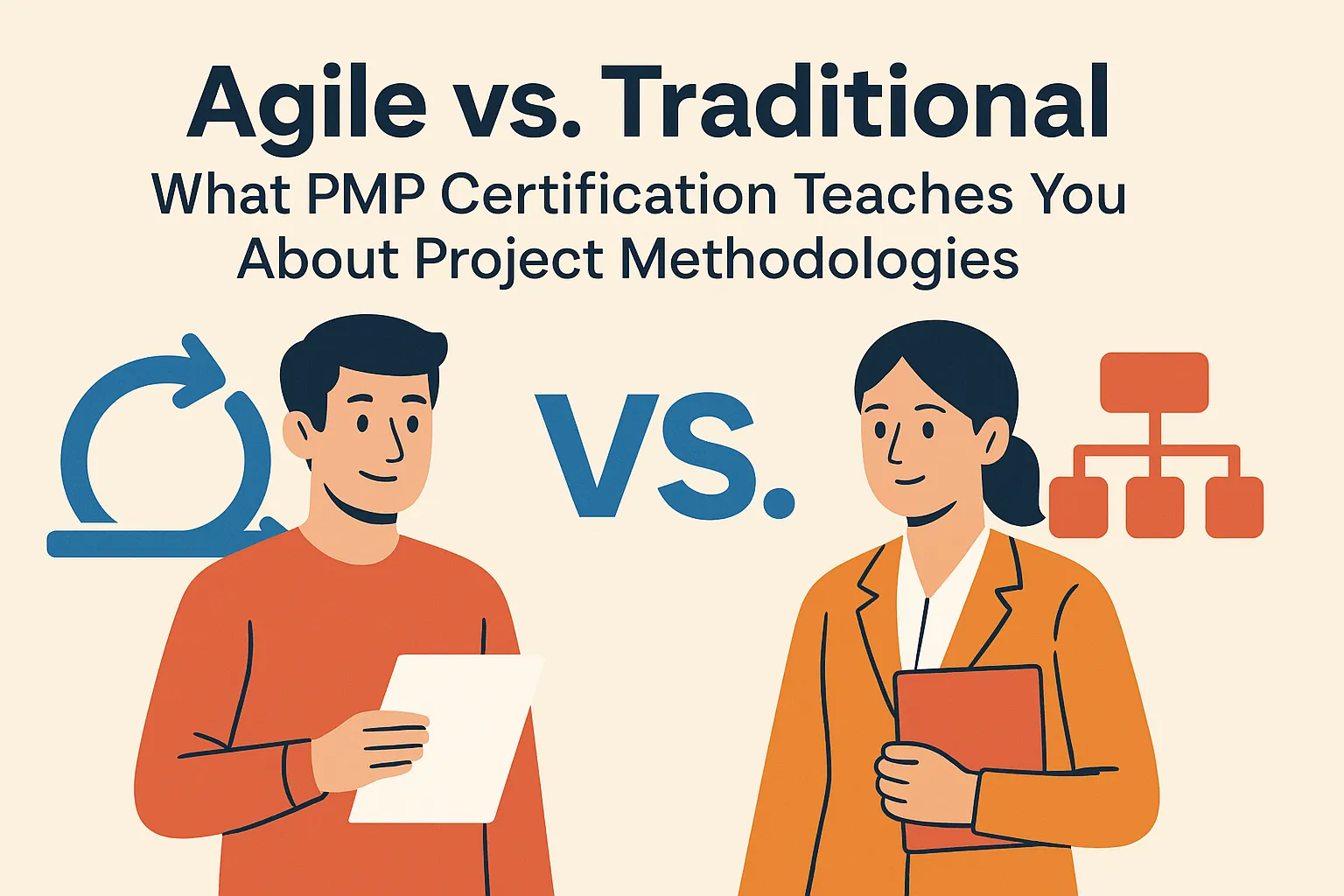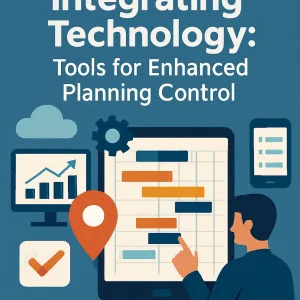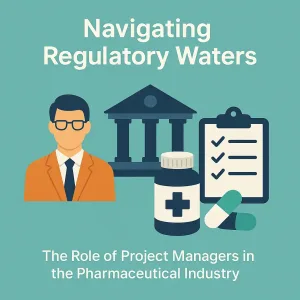Introduction to Project Management Methodologies
Methodologies serve as the backbone for guiding teams through the complexities of project execution. Understanding these methodologies is crucial for project managers and team leaders, as they dictate how projects are planned, executed, and delivered.
Definition of Project Management Methodologies
Project management methodologies are structured approaches that provide a framework for managing projects effectively. They encompass a set of principles, practices, and processes that help project managers navigate the various phases of a project, from initiation to closure. These methodologies can be broadly categorized into two main types: traditional (or waterfall) methodologies and Agile methodologies. Traditional methodologies emphasize a linear, sequential approach, while Agile methodologies focus on flexibility, collaboration, and iterative progress.
Significance of Choosing the Right Methodology
Selecting the appropriate project management methodology is vital for the success of any project. The choice impacts not only the project’s execution but also its outcomes. A well-suited methodology can enhance team collaboration, improve stakeholder engagement, and increase the likelihood of meeting project objectives within the defined constraints of time, budget, and quality. Conversely, an ill-fitted methodology can lead to confusion, miscommunication, and ultimately project failure. Therefore, understanding the strengths and weaknesses of various methodologies is essential for project managers to make informed decisions that align with their project goals and organizational culture.
Brief Introduction to PMP Certification
The Project Management Professional (PMP) certification, offered by the Project Management Institute (PMI), is a globally recognized credential that validates a project manager’s expertise and knowledge in the field. The PMP certification covers a wide range of project management methodologies, including both traditional and Agile approaches. It equips project managers with the skills necessary to lead projects effectively, adapt to changing environments, and apply the most suitable methodologies based on project requirements. By obtaining PMP certification, project managers not only enhance their professional credibility but also gain a comprehensive understanding of how to balance Agile and traditional methodologies to optimize project outcomes.
What is PMP Certification?
The Project Management Professional (PMP) certification is a globally recognized credential offered by the Project Management Institute (PMI). It signifies that an individual possesses the knowledge, skills, and experience necessary to lead and direct projects effectively. Here’s a closer look at what PMP certification entails:
- Overview of PMP Certification: The PMP certification is designed for project managers who want to demonstrate their expertise in managing projects across various industries. It covers a wide range of project management principles, methodologies, and best practices, including both Agile and traditional approaches. This certification is highly regarded and often required for project management roles, making it a valuable asset for professionals in the field.
- Eligibility Requirements and Certification Process: To qualify for the PMP certification, candidates must meet specific educational and professional experience criteria. Generally, applicants need to have:
- A four-year degree (bachelor’s or equivalent) along with at least 36 months of leading projects and 35 hours of project management education, or
- A high school diploma or associate degree with at least 60 months of leading projects and 35 hours of project management education.
The certification process involves submitting an application to PMI, which includes detailing your project management experience and education. Once approved, candidates must pass a rigorous exam that tests their knowledge of project management concepts, tools, and techniques.
- Importance of PMP Certification in Enhancing Project Management Skills: Obtaining a PMP certification is crucial for project managers and team leaders as it not only validates their skills but also enhances their understanding of various project management methodologies. The certification process equips professionals with:
- A comprehensive understanding of project management frameworks, including Agile and traditional methodologies, allowing them to choose the most effective approach for their projects.
- Improved leadership and communication skills, which are essential for managing teams and stakeholders effectively.
- A network of professionals and access to resources that can aid in career advancement and continuous learning.
Understanding Traditional Project Management
Traditional project management, often epitomized by the Waterfall model, is a structured approach that emphasizes a linear progression through distinct phases of a project. This methodology is characterized by its clear, sequential stages, which provide a framework for planning, executing, and closing projects. Here are the key aspects of traditional project management:
Definition and Principles of Traditional Project Management
- Waterfall Model: The Waterfall model is the most recognized traditional project management methodology. It follows a linear and sequential design process where each phase must be completed before the next one begins. This model is based on the premise that project requirements can be clearly defined at the outset and that changes during the project lifecycle should be minimized.
- Core Principles: Traditional project management is grounded in several core principles:
- Predictability: Emphasizes detailed upfront planning and documentation, which helps in predicting project outcomes.
- Control: Focuses on maintaining control over the project through strict adherence to the plan, timelines, and budgets.
- Risk Management: Involves identifying potential risks early in the project and developing mitigation strategies.
Phases of the Project Lifecycle in Traditional Methodologies
Traditional project management typically encompasses five distinct phases, often referred to as the project lifecycle:
- Initiation: This phase involves defining the project at a high level, including its purpose, scope, and stakeholders. A project charter is often created to formalize the project’s objectives.
- Planning: During this phase, detailed planning occurs. Project managers develop comprehensive project plans that outline tasks, timelines, resources, and budgets. This phase is crucial for setting clear expectations and deliverables.
- Execution: In this phase, the project plan is put into action. Teams carry out the tasks defined in the planning phase, and project managers monitor progress to ensure alignment with the plan.
- Monitoring and Controlling: This phase runs concurrently with execution. It involves tracking project performance against the plan, managing changes, and ensuring that the project stays on schedule and within budget.
- Closure: The final phase involves completing all project activities, obtaining stakeholder acceptance, and formally closing the project. Lessons learned are documented to inform future projects.
Advantages and Disadvantages of Traditional Approaches
Advantages:
- Clarity and Structure: The linear nature of traditional project management provides a clear roadmap, making it easier for teams to understand their roles and responsibilities.
- Comprehensive Documentation: Extensive documentation helps in maintaining a record of project decisions, changes, and outcomes, which can be beneficial for future reference.
- Predictable Outcomes: With thorough planning and control, traditional methodologies can lead to predictable project outcomes, especially in projects with well-defined requirements.
Disadvantages:
- Inflexibility: The rigid structure can make it difficult to adapt to changes in project scope or requirements, which can be problematic in dynamic environments.
- Delayed Feedback: Since testing and validation often occur late in the project lifecycle, issues may not be identified until the later stages, leading to costly rework.
- Assumption of Stability: Traditional methods assume that project requirements are stable and well-understood, which is not always the case in real-world scenarios.
Exploring Agile Methodologies
Understanding Agile methodologies is crucial for project managers and team leaders looking to enhance their skills and adapt to the evolving demands of their projects. The Project Management Professional (PMP) certification provides valuable insights into both Agile and traditional project management methods, equipping professionals with the knowledge to navigate this balance effectively.
Definition and Principles of Agile Project Management
Agile project management is an iterative approach that emphasizes flexibility, collaboration, and customer satisfaction. It is rooted in the Agile Manifesto, which outlines four key values:
- Individuals and Interactions Over Processes and Tools: Agile prioritizes team collaboration and communication, recognizing that effective teamwork is essential for project success.
- Working Software Over Comprehensive Documentation: While documentation is important, Agile focuses on delivering functional products quickly, allowing for faster feedback and adjustments.
- Customer Collaboration Over Contract Negotiation: Agile encourages ongoing engagement with stakeholders, ensuring that the project aligns with customer needs and expectations.
- Responding to Change Over Following a Plan: Agile methodologies embrace change, allowing teams to adapt to new information and shifting requirements throughout the project lifecycle.
These principles foster a dynamic environment where teams can respond to challenges and opportunities swiftly, making Agile particularly effective in fast-paced industries.
Common Agile Frameworks
Several frameworks embody Agile principles, each offering unique practices and structures. The most prominent include:
- Scrum: A framework that organizes work into time-boxed iterations called sprints, typically lasting two to four weeks. Scrum emphasizes roles such as the Scrum Master and Product Owner, facilitating regular ceremonies like daily stand-ups and sprint reviews to enhance team collaboration and accountability.
- Kanban: A visual management method that focuses on continuous delivery and workflow optimization. Kanban uses boards to visualize tasks, allowing teams to manage work in progress and identify bottlenecks. This approach promotes flexibility and efficiency, enabling teams to respond to changing priorities without the constraints of fixed iterations.
- Extreme Programming (XP): A framework that emphasizes technical excellence and customer involvement. XP practices include pair programming, test-driven development, and frequent releases, all aimed at improving software quality and responsiveness to customer feedback.
Benefits and Limitations of Agile Approaches Compared to Traditional Methods
Agile methodologies offer several advantages over traditional project management approaches, such as Waterfall, which typically follow a linear and sequential process. Key benefits of Agile include:
- Increased Flexibility: Agile allows teams to adapt to changes in requirements and priorities, making it ideal for projects with uncertain or evolving scopes.
- Enhanced Collaboration: The emphasis on teamwork and stakeholder engagement fosters a collaborative environment, leading to better communication and alignment on project goals.
- Faster Delivery: Agile’s iterative nature enables teams to deliver functional increments of the product more frequently, allowing for quicker feedback and adjustments.
However, Agile also has its limitations:
- Less Predictability: The flexibility of Agile can lead to challenges in project predictability and scope management, making it harder to estimate timelines and budgets accurately.
- Requires Cultural Shift: Implementing Agile methodologies often necessitates a significant cultural change within organizations, which can be met with resistance from teams accustomed to traditional methods.
- Potential for Scope Creep: The focus on customer collaboration and responsiveness can sometimes lead to scope creep if not managed effectively, as stakeholders may continuously introduce new requirements.
Key Lessons from PMP Certification on Methodologies
The Project Management Professional (PMP) certification is a globally recognized credential that equips project managers and team leaders with essential skills and insights into various project management methodologies. One of the critical areas of focus in PMP training is the understanding of Agile and traditional (Waterfall) methodologies. Here are some key lessons learned from PMP certification regarding these methodologies:
1. Understanding When to Apply Agile vs. Traditional Methodologies
- Contextual Awareness: PMP certification emphasizes the importance of assessing project requirements, stakeholder expectations, and environmental factors to determine the most suitable methodology. Traditional methodologies are often best suited for projects with well-defined scopes and stable requirements, while Agile methodologies excel in dynamic environments where flexibility is crucial.
- Project Characteristics: Participants learn to evaluate project characteristics such as complexity, size, and risk to decide whether to adopt Agile or traditional approaches. For instance, projects with high uncertainty and evolving requirements may benefit from Agile practices, while projects with clear, linear processes may align better with traditional methods.
2. Techniques for Integrating Agile Practices into Traditional Projects
- Hybrid Approaches: PMP certification teaches project managers how to blend Agile practices with traditional methodologies, creating a hybrid approach that leverages the strengths of both. This integration can enhance responsiveness while maintaining structure.
- Incremental Delivery: One of the key techniques learned is the concept of incremental delivery, where project phases are broken down into smaller, manageable parts. This allows for regular feedback and adjustments, which is a hallmark of Agile, while still adhering to the overall project timeline and objectives typical of traditional methods.
- Stakeholder Engagement: The certification program highlights the importance of continuous stakeholder engagement throughout the project lifecycle. By incorporating Agile practices such as regular check-ins and iterative reviews, project managers can ensure that stakeholder needs are met, even within a traditional framework.
3. The Importance of Flexibility and Adaptability in Project Management
- Responsive Planning: PMP certification instills the value of being adaptable in project planning and execution. Project managers learn to anticipate changes and develop contingency plans that allow for quick pivots when necessary, a principle that is central to Agile methodologies.
- Cultural Shift: Emphasizing flexibility also involves fostering a culture of adaptability within project teams. PMP training encourages leaders to cultivate an environment where team members feel empowered to suggest changes and improvements, aligning with Agile’s collaborative spirit.
- Continuous Improvement: The certification promotes the idea of continuous improvement through regular retrospectives and lessons learned sessions. This practice not only enhances team performance but also ensures that both Agile and traditional methodologies evolve based on past experiences.
Balancing Agile and Traditional Approaches
The debate between Agile and traditional methodologies is ongoing. The Project Management Professional (PMP) certification equips project managers with the knowledge and skills necessary to navigate this complex landscape effectively. Here’s how PMP certification prepares professionals to balance Agile and traditional approaches:
Strategies for Hybrid Project Management
- Understanding Methodology Fundamentals: PMP certification provides a comprehensive understanding of both Agile and traditional project management principles. This foundational knowledge allows project managers to assess the specific needs of their projects and choose the most suitable approach or a combination of both.
- Tailoring Approaches: One of the key strategies taught in PMP training is the importance of tailoring project management methodologies to fit the project context. This involves evaluating project size, complexity, stakeholder engagement, and risk factors to determine the right mix of Agile and traditional practices.
- Iterative Planning and Feedback Loops: Incorporating Agile practices such as iterative planning and regular feedback loops into traditional project frameworks can enhance responsiveness and adaptability. PMP certification emphasizes the importance of stakeholder communication and engagement, which is crucial for successful hybrid management.
Conclusion: Navigating the Future of Project Management
Understanding both Agile and traditional methodologies is crucial for project managers and team leaders. The Project Management Professional (PMP) certification equips professionals with a comprehensive understanding of these methodologies, enabling them to effectively navigate the complexities of modern projects. Here are the key takeaways:
- Importance of Methodological Knowledge: The PMP certification emphasizes the significance of mastering both Agile and traditional project management approaches. Agile methodologies, with their focus on flexibility and iterative progress, contrast with traditional methods that prioritize structured planning and sequential execution. By understanding the strengths and weaknesses of each, project managers can tailor their approach to fit the unique demands of their projects, ensuring better outcomes and stakeholder satisfaction.
- Encouragement for Continuous Learning: The journey does not end with obtaining a PMP certification. The field of project management is dynamic, with new tools, techniques, and methodologies emerging regularly. Continuous education is essential for staying relevant and effective. Engaging in workshops, webinars, and further certifications can enhance a project manager’s skill set, allowing them to adapt to changing project environments and team dynamics.
In conclusion, the balance between Agile and traditional project management methodologies is not just a theoretical concept but a practical necessity in today’s project-driven world. By pursuing PMP certification and committing to lifelong learning, project managers can position themselves as effective leaders who are well-equipped to tackle the challenges of the future.
Find out more about Shaun Stoltz https://www.shaunstoltz.com/about/.
This post was written by an AI and reviewed/edited by a human.



